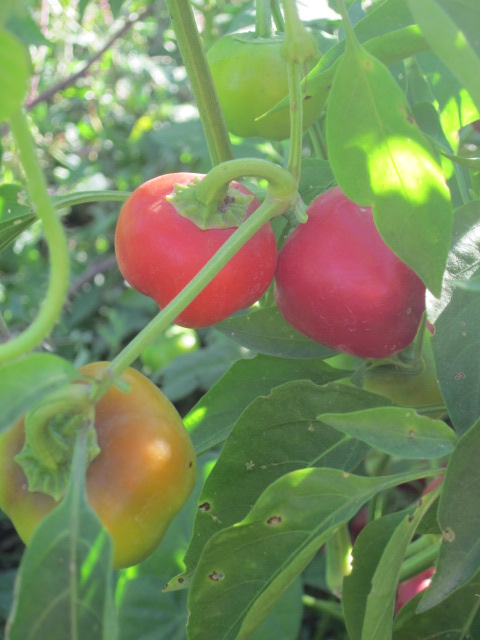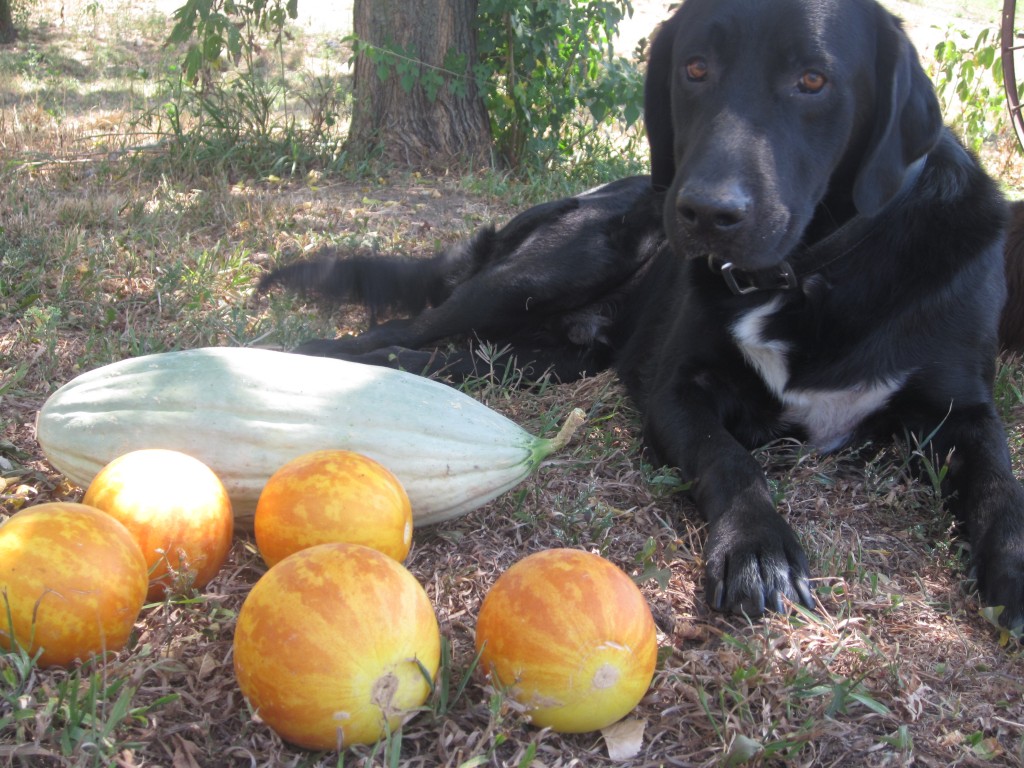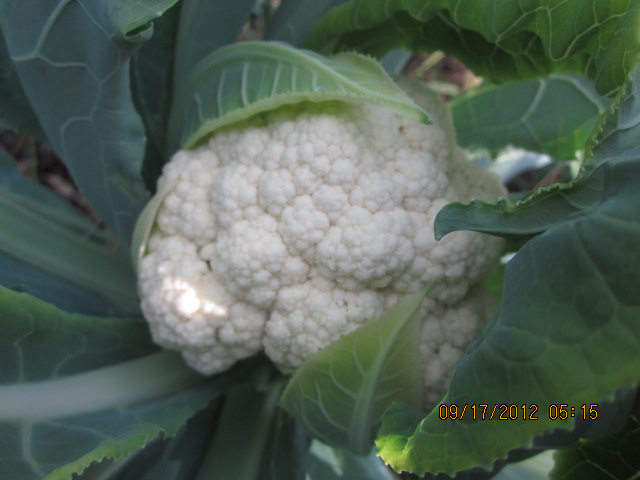Whether you are planting a new garden or replanting one that has been growing for years, attention to companion planting is guaranteed to improve your homegrown crops.
It’s a simple concept based on the way nature works… naturally. For instance one plant’s enemy is another plant’s food. Some bad bugs have pet hates, so by planting or introducing what they don’t like, you can protect the plants that they would otherwise feed on. And then there are plants that have something to offer other plants, be it shade, or some sort of nutrient they put into the soil. You will also find that some plants provide other plants with specific nourishment.
A Fatal Attraction for Bad Bugs
Here the trick is to plant whatever attracts the nasties. For instance, the tiny black aphids that chomp their way through young cabbages, broccoli and other veggies provide a feast for nasturtiums. These easy-growing herbs attract the aphids with their sticky juices that effectively end up smothering large numbers of these damaging mini-bugs.
Growing Plants that Deter Bugs
An interesting fact about companion planting is that not all plants like – or dislike – the same bugs. Similarly, while some plants (like carrots) love tomatoes, some plants (like dill and asparagus) loath tomatoes.
Some examples of plants that will deter bad bugs include:
- pennyroyal that keeps worms and beetles away from strawberries,
- asparagus and marigolds both help to protect tomatoes from harmful nematodes in the soil,
- lemon verbena that will keep flies, aphids and midges away from all vegetables and fruit trees,
- just about any plant that is related to garlic or onions, including chives (in particular garlic will chase off potato bugs).
Plants that Have Other Benefits for Companion Plants
Providing shade is a biggie, but you need to be sure that the shade giver actually likes the plant you choose to be its companion. Sweetcorn is an excellent provider of shade and works well with a lot of other plants, including pumpkin that will creep around towering corn plants, producing fruit at ground level. It can also be a support for some climbing flower plants.
Fennel is one of the few plants that most other plants hate! But there are a couple of veggies that like fennel, including gem squash and spring onions (or green onions).
There are many more plants that benefit from just about anything. Yarrow is a good example as it attracts ladybirds and wasps that both love to eat aphids. Most plants are fond of yarrow.
Picking Plants that Deter Bugs
Just as we can use leaves and other parts of certain plants to make organic pesticides, or to rid our environment of pests (scented geraniums are great for mosquitoes, freshly crushed tomato and basil leaves will usually get rid of flies, and sprigs of catnip will get rid of ants), there are similar steps we can take within the garden itself. Here are two possibilities:
- Don’t rake up the leaves from oak trees. Instead use them to create a barrier around garden beds where lettuces are growing and they’ll keep the snails and slugs away.
- If you’re a fan of grapefruit, cut them in half and scoop out the fruit, then use the skin “shells” to attract slugs. Simply place them upside down in any part of the garden where slugs are a problem and remove them, together with slug invaders, the next day.
Ultimately you need to be aware of which plants do well together, and which don’t. Probably one of the very best examples of companion planting is illustrated by the relationship between tomatoes and asparagus. They really are best friends because not only will the solanine contained in tomatoes protect asparagus plants from insect attack, but it also encourages growth in the asparagus.
Annette Welsford is the author of best selling book Companion Planting for Veggies
Article Source: http://EzineArticles.com/?expert=Annette_Welsford






Yes, yes. I have actually heard of this despite not being a gardener. What a wonderful, natural way to get some extra benefits. Olly looks like a great dog. My dumb guard dog would have been carrying off the melons and trying to bury them. If she wasn’t too busy eating rocks.
hahaha! You made me laugh, Alessa. Ollie loves me too much to bury my melons, but our other dog would gladly do the job if she knew I didn’t want her to.
What a great post! We always intend to plant but the activity schedule gets so full, it never seems to happen. But, Tomatoes and Basil seem like a simple combination that we can start tilling the land with ~ Thank you!
A couple of tomato plants and some basil wouldn’t take up much time or space, Laura, but could make you very happy, indeed! 😉
I suspect that the outlook for any garden with me in charge would be ‘bleak’, but I love the idea of companion gardening, which must have been around through the ages as people tried and tested new ideas.
I love the pictures of your home grown fruit and veg- yummy!
Cheers,
Gordon
Thanks Gord!
I learn something new from you everyday! I’ll be running out to get marigolds in a few weeks! I have both basil and tomatoes – thought they just tasted good together…no idea they were helpful!
Yay Carrie! You go, girl!
I don’t have a garden yet…but I desperately want to convert my front yard into a garden. I am loving these posts and am ready to go till up the grass, till in some rich compost and plant. Oh how I wish I could this year!
Regina,
do it girl, do it! Just a tiny postage-stamp sized garden can reap great rewards!
Very interesting, Amy. I’m a ‘new’ gardener – and am waiting impatiently for the weather to warm up so I can get out and plant the freesia bulbs and Choisya bush that have been waiting for weeks for a proper home! I’m working on a cuttings garden myself, so am looking a companion-planting from a different slant. Loved your article, though. Forwarding it to a friend with a new allotment today.
Freesia bulbs! Love that flower! Happy gardening, Susan!
This is great, Amy!
I had heard about cycling crops so that the following year there is a different plant utilising different chemicals and thus allowing the soil to replenish….this is interesting about companion planting, I will be passing it on to some people that I know 🙂
Thanks so much, Hemal!
Very good information that I will use this year. I always thought companion planting was where I manned the shovel and my wife supervised. I weeded, my wife harvested, I cooked my wife ate….boy did she have me fooled.
Your wife sounds mighty smart, Chef, either that or you’re mighty—-nah!! Thanks for the giggle! 😉
Years ago, my husband and I used to practice some companion planting techniques when we lived in rural Arkansas. Reading this, I realized we strayed away from this practice years ago and have never even given it any thought in years. Would I again? We had varying degrees of success with it. One thing I do remember is that peas never did seem to do well when planted with alliums. And, come to think of it, nowadays we grow a lot of onions in our community garden plot in upstate New York (onions love our soil) – and never have much luck with peas. Coincidence?
Amy this is fab, it all makes so much sense, feels right love it, I have been aware of this but not really got into it, I want to learn more now! The sun is shining and I have barrows of stuff to plant – at last !!! 🙂
Have to share this on my blog in Granddads Garden 🙂
Cher x
Thanks chickie! 🙂
Amy – so excited, love this post, it brought back things I learned and forgot, last year I lived on a vineyard here in France and learned so much about the producing of organic wine, I was facinted by how they grew beautiful wild fowers from seed in between the vines to balance nitrogen and protect from insects, it was awesome – love it – also you reminded me about why my Mum grew so many marigolds – off to get some marigold seeds !!!!! Thanks Amy 🙂
have put this on my blog xx
Thank you, Cher, and thanks so much for sharing my post on your blog today! I am really impressed that you lived on a vineyard in France. French wine! Oooo-lala! I’ll bet it was a feast for the senses!
Hi Amy!
Wow, I didn’t know that planting certain plants near other plants would help make them grow. That’s amazing. 🙂
I did know that marigolds keep rabbits away. Learned that when I lost every one of my hostas to a bunch of rabbits (that nibbled them down to the nub!)
Thanks so much for the info. Have a great day! Cheers, darlin.
I really need to figure this out as we have tons of potatoe bug, and squash bugs. Thanks